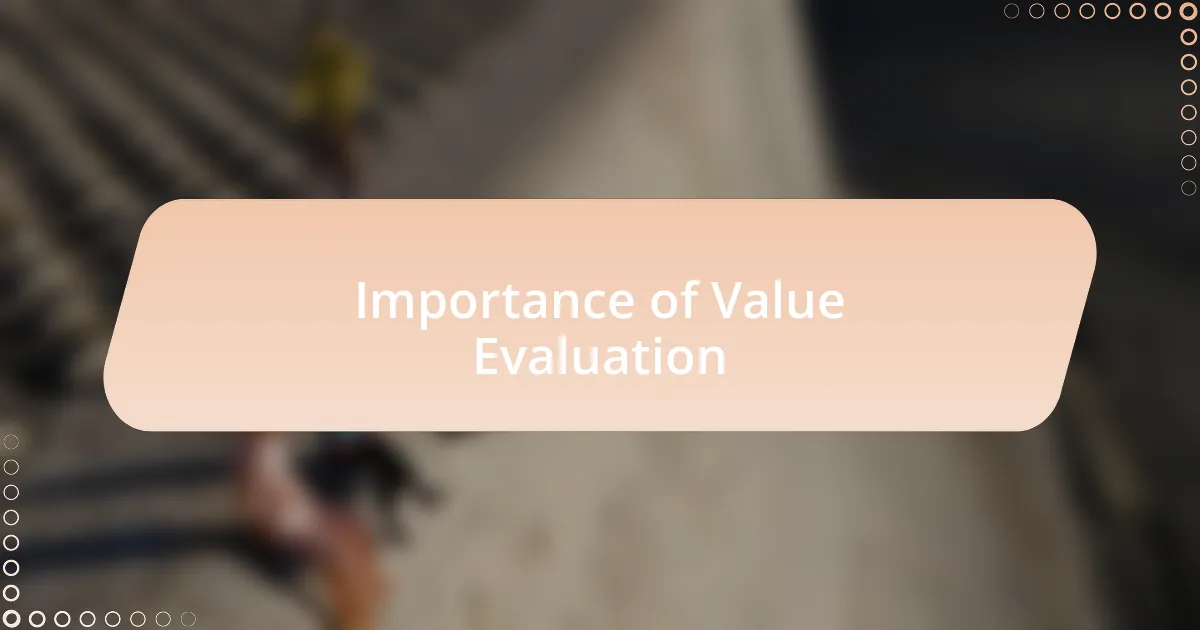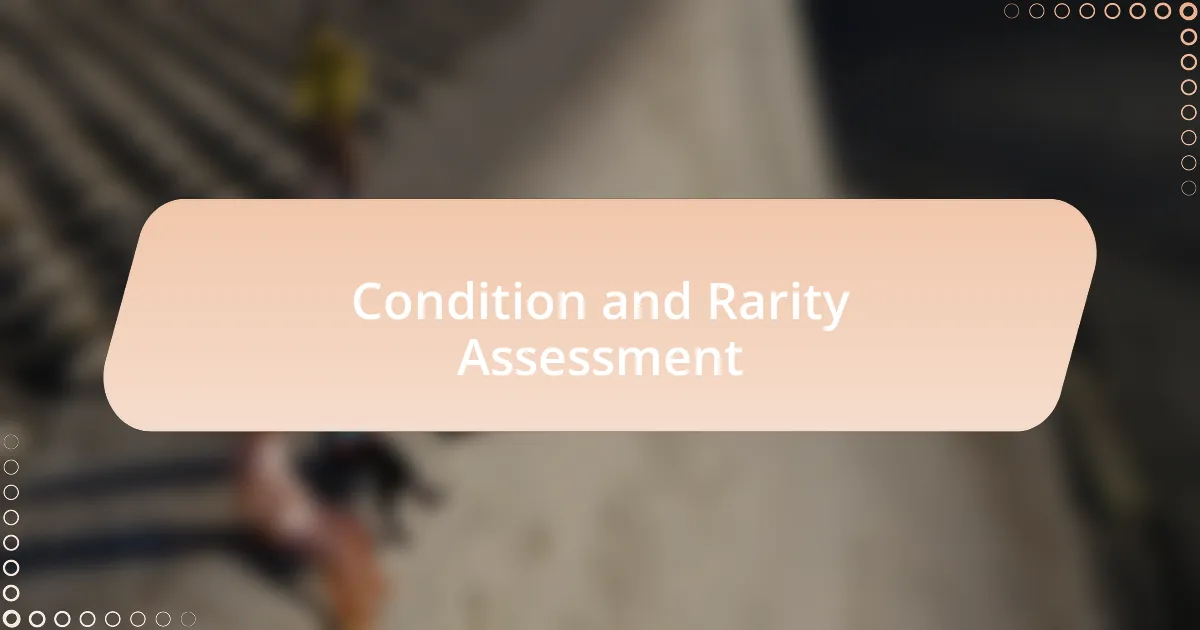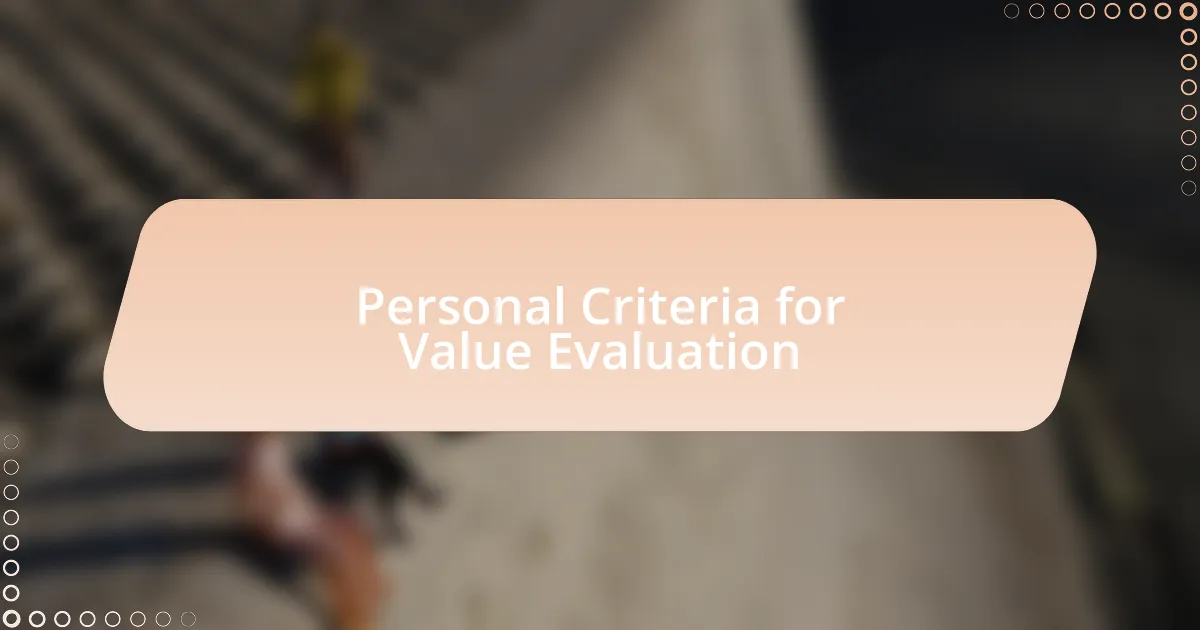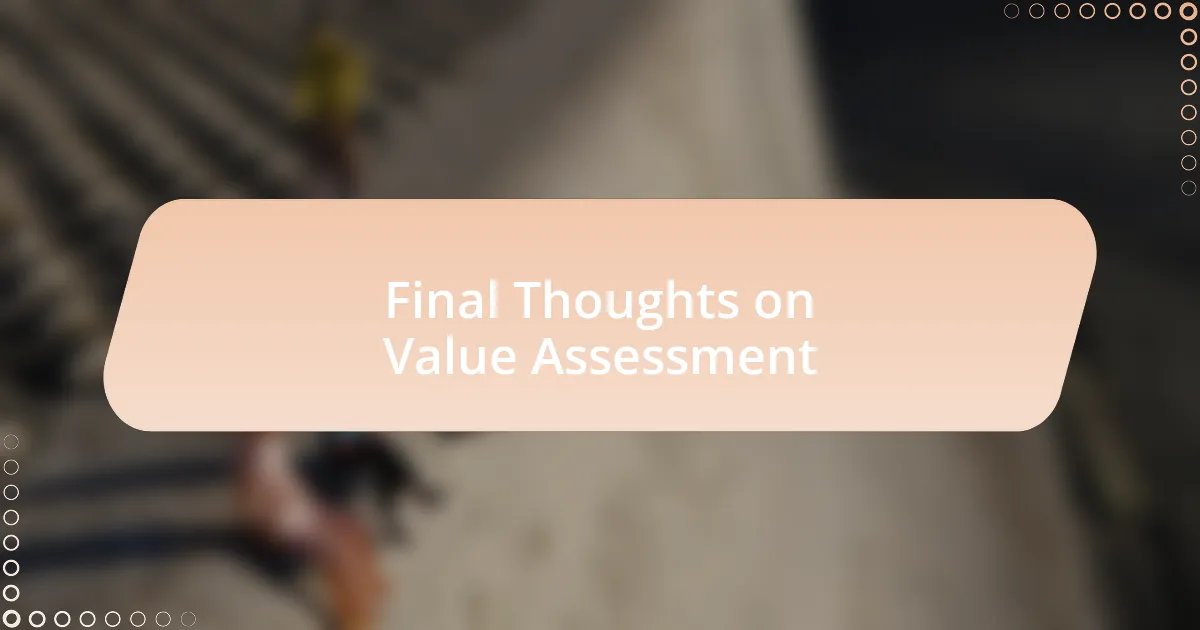Key takeaways:
- Vintage toys carry emotional and historical significance, often serving as tangible reminders of childhood and familial connections.
- Value evaluation of vintage toys extends beyond rarity and condition, incorporating personal memories and cultural narratives associated with the items.
- Condition and rarity are critical factors in determining a toy’s value, with pristine items generally commanding higher prices than well-loved but rare pieces.
- Personal connections to toys, combined with community engagement among collectors, enhance their sentimental value and significance beyond monetary aspects.

Understanding Vintage Toys
Understanding vintage toys goes beyond just their age; it involves appreciating their history and the joy they brought to children. I remember discovering an old tin robot at a flea market, its paint slightly chipped but still vibrant. Holding it in my hands, I felt a wave of nostalgia, imagining the laughter it once inspired.
These toys often carry stories—each scratch or dent a testament to the adventures they experienced. Have you ever wondered what games your parents or grandparents played with their vintage toys? It’s fascinating to think about the lives these items have touched, creating cherished memories that transcend generations.
The allure of vintage toys also lies in their craftsmanship. Unlike many modern toys, many vintage pieces were made with care and attention to detail, evoking a sense of quality that often feels missing in today’s mass-produced items. I find myself drawn to the unique designs and materials, each one whispering its own tale of creativity.

Importance of Value Evaluation
When I evaluate the value of vintage toys, I often reflect on how they connect us to the past. It’s not just about rarity; it’s about understanding the sentimental value behind each piece. For instance, I came across a classic Fisher-Price toy that my brother had as a child, and its worth extended far beyond its price tag—the memories of playtime surged back, revealing a family’s legacy.
Understanding the importance of value evaluation is crucial for collectors and enthusiasts alike. It helps to determine not only financial worth but also emotional significance. I remember talking to a friend who had inherited a collection of vintage dolls. For her, evaluating their worth wasn’t merely a transaction; it was a way to honor her mother’s love for storytelling and the role those dolls played in her childhood.
Each vintage toy is a window into a different era, and evaluating their value allows us to appreciate their stories on a deeper level. Have you ever held a toy and thought about its journey? I believe that when we assign value to these treasures, we acknowledge the craftsmanship, the history, and the joy they’ve provided through the years, ensuring that they are celebrated for generations to come.

Factors Influencing Toy Value
When assessing the value of vintage toys, rarity often comes into play. For instance, I once stumbled upon a limited edition action figure from the ’80s at a flea market. It was tucked away in a dusty corner, but the moment I saw it, I recognized its scarcity. This particular figure was produced in fewer quantities than others, making it a true gem among collectors. Have you ever found something special that you knew was hard to come by?
Another significant factor is the condition of the toy. I still remember carefully unboxing a pristine, unopened set of vintage building blocks I had stored away. The untouched packaging made it feel almost like a time capsule. It’s fascinating how even minor defects can dramatically influence value; a toy that’s been loved to its last day might carry charm but could struggle in the market compared to its untouched counterpart. Doesn’t it strike you as interesting how nostalgia and condition interplay in this world?
Finally, the story behind a toy can profoundly affect its perceived value. I’ve had discussions with fellow collectors about the emotional connections we form with specific pieces. A toy once owned by a celebrity or one that featured in a popular TV show can fetch a higher price simply because of its narrative. Can you think of a toy from your childhood that holds a unique story? Understanding these contextual elements truly adds depth to the evaluation process, transforming value from mere numbers into heartfelt connections.

Historical Significance of Vintage Toys
When I think about vintage toys, their historical significance really stands out. For many of us, these toys are tied to specific memories and eras. I recall the joy of playing with a classic wooden train set that my uncle had as a child. It wasn’t just a toy; it represented a simpler time when imagination ruled playtime. Doesn’t it make you wonder how each toy has a story that reflects the culture and values of its time?
Vintage toys often capture historical trends and advancements in design and technology. For instance, the evolution of plastic toys in the mid-20th century marked a shift from traditional materials. I once came across a 1960s wind-up robot that not only amazed me with its intricate mechanics but also highlighted the fascination with space and robotics during that era. How do you think such innovations influence what we consider valuable today?
Looking back, vintage toys serve as tangible reminders of our childhoods and societal shifts. I often think about the way my sister cherished her Cabbage Patch Kids, representing a marketing phenomenon of their time. Seeing her connect so deeply with those dolls reminds me how toys can embody wider cultural narratives. Isn’t it interesting to consider how the journey of a toy extends far beyond play, intertwining with our personal histories and collective experiences?

Condition and Rarity Assessment
When assessing the condition of vintage toys, I’ve learned that the eye of a collector truly matters. A toy in its original packaging, with no wear or fading, can fetch a significantly higher price than one that shows signs of play. I remember stumbling upon an old action figure at a garage sale, its box slightly dented yet still intact. It made me reflect: how often do people overlook a toy’s potential due to minor imperfections?
Rarity plays a crucial role in determining a toy’s value as well. Some editions are released in limited quantities, which means they become highly sought after among enthusiasts. I recall a rare board game my friend discovered—only a few thousand were produced. Holding that game felt like possessing a piece of history, and I couldn’t help but wonder how many stories were tied to those limited editions in the hands of children over the years.
The combination of condition and rarity intertwines in fascinating ways. A toy that remains in excellent condition but is widely available may not command much respect. On the flip side, I once found a well-loved vintage doll, its once-bright paint now faded. It was rare, though, and the stories it could tell tugged at my heartstrings. Doesn’t it make you think about how the journey of a toy is often marked by the joy it brought to generations, making even the most worn pieces valuable?

Personal Criteria for Value Evaluation
When I evaluate the value of vintage toys, my criteria begin with the emotional connection they evoke. I recall my childhood fascination with a particular toy train set that I cherished for years. Seeing it again years later, I was struck not just by its physical presence but by the memories it carried. Isn’t it interesting how some toys can resonate so deeply, turning simple playthings into treasured reminders of our past?
Another aspect I consider is the historical context surrounding a toy. I remember diving into the backstory of a classic doll, learning about the era it represented and the cultural shifts that influenced its design. This context can significantly enhance a toy’s appeal, transforming it from a mere object into a narrative that encapsulates a moment in time. Wouldn’t you agree that the stories behind toys can often add layers of significance, increasing their worth beyond the monetary aspect?
Lastly, I weigh the toy’s uniqueness and the community it attracts. For instance, I once joined a local collector’s group focused on a specific brand of die-cast cars. The camaraderie, discussions, and shared excitement over our finds ignited my passion further. As we swapped tales and discoveries, I realized that toys are not just commodities; they foster connections among like-minded individuals. Whether a toy is rare or commonplace, isn’t it the joy of sharing and reliving those moments together that truly elevates its value?

Final Thoughts on Value Assessment
When I reflect on the value of vintage toys, I often find myself thinking about condition and restoration. I recall a time I acquired a weathered but charming action figure. It had seen better days, yet with some careful cleaning and minor repairs, it transformed into a showpiece in my collection. Isn’t it fascinating how a little effort can revive memories and enhance value, making us see the potential rather than the flaws?
Another vital factor is the market demand, which can fluctuate surprisingly. I remember attending a local toy convention where I discovered a limited-edition collectible that had been sitting in my attic for years. To my astonishment, I learned that it had become a sought-after item among collectors. This experience taught me that knowing the current trends can be as crucial as any sentimental attachment. How often do we overlook the potential worth of our beloved items just because we’re unaware of what’s trending in the community?
Ultimately, the heart of value assessment lies in the personal stories that tie us to these toys. I think back to the joy of gifting a restored vintage toy to a close friend, igniting memories for both of us. It’s moments like these that remind me that a toy’s worth often goes beyond the surface level. When was the last time a toy inspired a deep connection or sparked a conversation? In my experience, that connection is what truly defines a toy’s value.